CMMC Practice SI.L1-3.14.4 – Update Malicious Code Protection: Update malicious code protection mechanisms when new releases are available.
Links to Publicly Available Resources
AMTSO is the Anti-Malware Testing Standards Organization, a community of over 60 security and testing companies from around the world. This link from Microsoft identifies reputable security companies that provide consumer security software that is compatible with Windows. This document provides assessment guidance for Level 1 of the Cybersecurity Maturity Model Certification (CMMC). This Ransomware Guide includes ransomware prevention best practices and a ransomware response checklist. NIST resource that defines the requirements for malicious code protection. This NIST Special Publication provides recommendations for improving an organization’s malware incident prevention measures. This sample policy from Norfolk State University is an example of how to establish a policy and procedure for protection from malicious code. This guide from Salisbury University is designed to inform users of the risks and symptoms of malware infection on PCs, as well as prevention and removal methods. This sample policy from Sam Houston State University is an example of a policy to reduce risk by protecting against malware. This SANS whitepaper discusses several common practices which, when implemented together, will greatly decrease, and perhaps almost stop malware. This SANS whitepaper discusses how ransomware works and dissects its life cycle into multiple stages. The official Ubuntu website provides open source and proprietary antivirus options that support Ubuntu and other flavors of Linux. This sample policy from The University of Mary Washington is an example of a standard to promote a secure computing environment. This YouTube video discusses malware in the context of information security.
Discussion [NIST SP 800-171 R2]
Malicious code protection mechanisms include anti-virus signature definitions and reputation-based technologies. A variety of technologies and methods exist to limit or eliminate the effects of malicious code. Pervasive configuration management and comprehensive software integrity controls may be effective in preventing execution of unauthorized code. In addition to commercial off-the-shelf software, malicious code may also be present in custom-built software. This could include logic bombs, back doors, and other types of cyber-attacks that could affect organizational missions/business functions. Traditional malicious code protection mechanisms cannot always detect such code. In these situations, organizations rely instead on other safeguards including secure coding practices, configuration management and control, trusted procurement processes, and monitoring practices to help ensure that software does not perform functions other than the functions intended.
Further Discussion
Malware changes on an hourly or daily basis, and it is important to update detection and protection mechanisms frequently to maintain the effectiveness of the protection.
